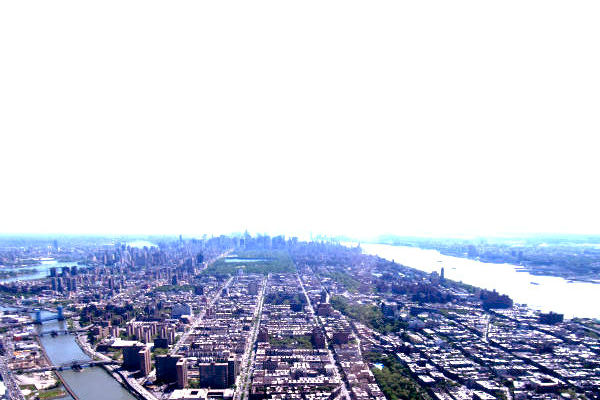 The Health Department today released new data on drug overdose deaths from East Harlem to Hollis.
The Health Department today released new data on drug overdose deaths from East Harlem to Hollis.
Consistent with nationwide trends, overdose deaths rose during the first quarter of 2020.
From January – March 2020, there were 440 overdose deaths, 41 more deaths than the previous highest quarter.
From January – March 2020, there were 440 overdose deaths, 41 more deaths than the previous highest quarter. To address the recent uptick, the City has pledged an additional $2 million in outreach and overdose prevention resources that include expanding access to buprenorphine treatment, increasing naloxone distribution through community-based organizations, and establishing harm reduction vending machines to make naloxone readily available.
To ensure New Yorkers can access life-saving, overdose prevention resources throughout the pandemic, the City has continued to invest in innovative strategies, ranging from methadone home delivery to launching a pilot program that makes naloxone freely available in 16 pharmacy locations across the five boroughs.
The full 2019 Epi Data Brief and 2020 first-quarter report can be found here and here.
“Even before the COVID-19 pandemic gripped New York City, overdose deaths were at record levels, consistent with national trends,” said Health Commissioner Dr. Dave A. Chokshi. “This has been a tragedy leading into a crisis. Every fatal overdose is preventable and we will continue our work to keep our fellow New Yorkers alive.”
There were 1,463 drug overdose deaths in 2019, an increase of 11 deaths from 2018. Fentanyl— an opioid 50 to 100 times stronger than morphine —was detected in 68% of drug overdose deaths in 2019 compared with 60% in 2018.
The provisional Epi Data Brief shows that drug overdose deaths in New York City remained at epidemic levels in 2019, with evident disparities.
There were 1,463 drug overdose deaths in 2019, an increase of 11 deaths from 2018.
There were 1,463 drug overdose deaths in 2019, an increase of 11 deaths from 2018.
Fentanyl— an opioid 50 to 100 times stronger than morphine —was detected in 68% of drug overdose deaths in 2019 compared with 60% in 2018.
Fentanyl— an opioid 50 to 100 times stronger than morphine —was detected in 68% of drug overdose deaths in 2019 compared with 60% in 2018.
For the third consecutive year, fentanyl was the most common substance identified in overdose deaths.
NYPD laboratory testing has identified an increased presence of fentanyl in heroin, cocaine, ketamine, and methamphetamine, as well as in benzodiazepines and opioid analgesics acquired from non-pharmaceutical sources.
2019 Epi Data Brief highlights:
- The rate of overdose death remained the same in 2019 as 2018 (21.2 per 100,000 residents).
- In 2019, opioids were involved in 83% of overdose deaths.
- For the third year in a row, fentanyl was the most common substance involved in drug overdose deaths, present in 68% of overdose deaths in 2019.
- Mixing substances remains an issue of critical concern. Half (51%) of all overdose deaths involved multiple central nervous system depressants, such as alcohol, benzodiazepines, and opioids. The Health Department advises New Yorkers who use drugs to avoid mixing substances.
- For the second consecutive year, Latino/a New Yorkers had the highest rate of drug overdose death.
- From 2018 to 2019, rates of overdose death increased among Latino/a New Yorkers (25.5 to 26.1 per 100,000 residents) and Black New Yorkers (22.5 to 23.0 per 100,000 residents). Among White New Yorkers, the rate of overdose death decreased for the third consecutive year, to 23.2 overdose deaths per 100,000 residents.
- The neighborhoods with the top five highest rates in 2019 (Hunts Point-Mott Haven, Highbridge-Morrisania, Crotona-Tremont, Fordham-Bronx Park, East Harlem) are consistently among the neighborhoods with the highest overdose rates in New York City.
“Year after year, residents of the South Bronx and East Harlem have among the highest rates of drug overdose death in New York City.
“These data tell a consistent story,” said Senior Director of Research and Surveillance Dr. Denise Paone. “Year after year, residents of the South Bronx and East Harlem have among the highest rates of drug overdose death in New York City. Although we eagerly await overdose mortality data from the second quarter of 2020 to understand the impact of the COVID-19 pandemic on overdose deaths, we have already implemented several interventions, including work focused in neighborhoods that are disproportionately impacted, to help address the unique impact this pandemic has on overdose risk.”
In recognition of the challenges the COVID-19 pandemic presents for people who use drugs or have a history of substance use, the Health Department has implemented several new interventions aimed at reducing overdose risk, including:
- Launched a methadone delivery system in partnership with the New York State Office of Addiction Services and Supports (OASAS) after pandemic-related changes in federal regulations around methadone. The program helps ensure patients can access their life-saving medication without putting themselves or the community at risk for COVID-19. As of September 30, the MDS program has made 1,755 deliveries.
- Secured personal protective equipment and cleaning supplies for Syringe Service Programs (SSPs) to safely operate as an essential service during the pandemic. SSPs serve communities that experience health inequities including the disproportionate impact of COVID-19.
- Launched targeted messaging to inform New Yorkers at risk of overdose options for accessing Medication for Opioid Use Disorder (MOUD) including a targeted postcard mailing campaign detailing ways to access methadone and buprenorphine during the COVID-19 pandemic.
- Disseminated low tolerance guidance to provide information about how changes in tolerance impact overdose risk and provide steps people can take to reduce the risk of overdose. The guidance can be found here.
- Published a fentanyl fact sheet to provide information about the drug’s potency, its role in increasing overdose risk, signs of a fentanyl-involved overdose, and overdose prevention strategies for people who use drugs. The fact sheet can be found here.
- Issued several public and provider facing guidance documents addressing overdose, changes in tolerance, and access to treatment and services during the pandemic that can be found here.
- Re-launched the “I Saved A Life” campaign which encourages New Yorkers to have naloxone, a life-saving medication to reverse an opioid overdose.
Since the launch of HealingNYC in March 2017, the Health Department has:
- Distributed 395,509 naloxone kits throughout the city. 156,836 kits were distributed to Opioid Overdose Prevention Programs (OOPPs) in 2019. To increase access to naloxone during COVID-19 in neighborhoods with high overdose rates, the Health Department recently launched a pilot program to make naloxone available for free at 16 pharmacy chain locations across all five boroughs, including four of the top five neighborhoods with the highest overdose rate.
- Launched Relay, a nonfatal overdose intervention, currently at 13 emergency departments. Following a nonfatal overdose, Relay sends a peer advocate to emergency department sites to provide naloxone, overdose risk reduction support, and connections to other services and care. From launch through June 30, 2020, Relay has received 2,581 eligible referrals, of which 1,748 (68%) accepted Relay services, and distributed 2,687 naloxone kits.
- Conducted targeted overdose prevention and education outreach through the Rapid Assessment and Response (RAR) initiative. RAR has interacted with and provided supplies, education and resources to people at community venues, substance use treatment centers, pharmacies, and shelters in Washington Heights – Inwood, Central Harlem – Morningside Heights, East Harlem, and the Lower East Side – Union Square in Manhattan; Hunts Point – Mott Haven, Highbridge – Morrisania, and Crotona – Tremont in the Bronx; and Downtown – Heights – Park Slope, Bedford Stuyvesant – Crown Heights, East New York, and Williamsburg – Bushwick in Brooklyn.
- Expanded funding to 14 syringe service programs across the city that provide critical services to people who use drugs including sterile drug use supplies, overdose prevention education, and harm reduction counseling.
- Expanded access to effective treatment for opioid use disorder by training 1,817 new buprenorphine providers from launch through June 30, 2020; implementing a Buprenorphine Nurse Care Manager Initiative at 27 federally qualified health care center sites; and establishing buprenorphine induction at 14 emergency departments. From 2018 to 2019, the number of NYC residents who filled at least one buprenorphine prescription increased by 8% (15,174 to 16,383).
- Disseminated several citywide public awareness campaigns in print, social media, and on TV: “Fentanyl,” “Overdose is Preventable,” “I Saved a Life,” and “I am Living Proof that Buprenorphine and Methadone Work.”
- Launched Health Engagement and Assessment Teams (HEAT) to provide a public health-focused approach to serving New Yorkers presenting with substance use and mental health concerns to reduce the footprint of these persons in the criminal justice system.
New Yorkers can find more information about substance use and their health here. Individuals seeking support or treatment for substance use issues for themselves or their loved ones can contact NYC Well by calling 1-888-NYC-WELL, texting “WELL” to 65173, or going to nyc.gov/nycwell.
Free, confidential support is available at any hour of the day in over 200 languages.
Become a Harlem Insider!
By submitting this form, you are consenting to receive marketing emails from: . You can revoke your consent to receive emails at any time by using the SafeUnsubscribe® link, found at the bottom of every email. Emails are serviced by Constant Contact








